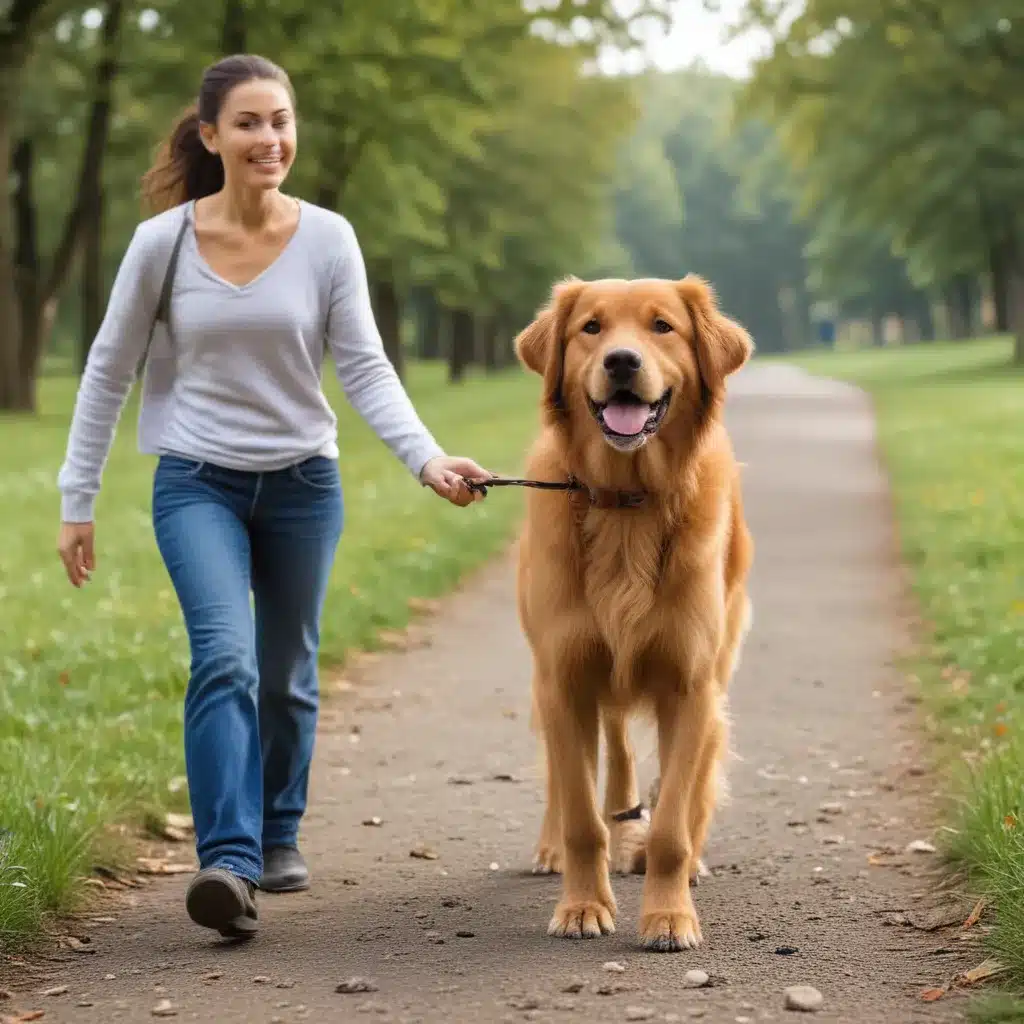
Ah, the age-old struggle of the dog owner – getting your furry friend to come when called. It’s a dance we’ve all been through, haven’t we? One minute they’re by your side, the next they’re off chasing squirrels, blissfully ignoring your desperate pleas. But fear not, my fellow dog lovers, I’m here to share my hard-earned wisdom on the art of “come when called” training.
The Importance of a Reliable “Come” Command
Before we dive in, let’s talk about why this skill is so crucial. Having a dog that comes when called isn’t just a cute party trick – it’s a matter of safety and well-being. Imagine this: you’re at the park, your pup is frolicking carefree, and then, a squirrel darts across the path. Your dog takes off in hot pursuit, and suddenly, they’re out of sight, heading straight for a busy road. If they don’t have a reliable “come” command, you’re facing a heart-stopping moment that no dog owner ever wants to experience.
But it’s not just about keeping them safe from danger. A well-trained “come” command also allows your furry friend to enjoy the freedom of off-leash adventures, without constantly worrying that they’ll go rogue. Imagine the joy of watching your dog run and play, secure in the knowledge that they’ll return to you when called. It’s a level of trust and communication that every dog owner should strive for.
Laying the Groundwork for Success
Okay, now that we’ve covered the “why,” let’s dive into the “how.” Teaching your dog to come when called is a journey, not a destination, and it all starts with laying the right foundation. Here are some key steps to get you started:
Start Young
The earlier you can begin training, the better. Puppies are sponges, soaking up information left and right, so use this to your advantage. Start practicing the “come” command as soon as you bring your new canine companion home, and make it a regular part of your routine.
Make it Rewarding
Remember, dogs are motivated by one thing above all else: treats! When your dog comes to you on command, shower them with praise, affection, and their favorite snacks. This positive reinforcement will help cement the behavior and make them eager to obey.
Practice, Practice, Practice
Consistency is key when it comes to training. Set aside time each day to work on the “come” command, gradually increasing the distance and distractions. And don’t just practice at home – take your show on the road to the park, the beach, or anywhere else your dog might encounter temptations.
Mastering the Art of the “Come”
Now that you’ve laid the groundwork, it’s time to dive into the nitty-gritty of teaching your dog to come when called. Here are some tried-and-true techniques to help you along the way:
The Recall Game
This one is a personal favorite of mine. Start by having your dog on a long leash (20 feet or more) in a safe, enclosed area. Call their name and say “come” in a bright, enthusiastic voice, then turn and run a few steps away. When they catch up to you, shower them with praise and treats. Gradually increase the distance and make it more challenging over time.
The Magic Word
Certain words or phrases can become powerful triggers for your dog. Choose a specific “come” command, like “here” or “come” (and stick to it!), and use it consistently every time you want them to return to you. Over time, that word will become a surefire way to get their attention.
Avoid the Trap
One common mistake dog owners make is calling their dog to come, only to then do something the dog dislikes, like putting them on a leash or taking them home. This can inadvertently train your dog to avoid coming when called. Always make the “come” command a positive experience, with rewards and playtime.
Manage Distractions
Let’s be real, it’s hard to compete with the lure of a squirrel or a tasty-looking snack on the ground. That’s why it’s important to practice your “come” command in increasingly distracting environments. Start in a quiet room at home, then move to the backyard, the park, and beyond. Gradually expose your dog to more temptations, and reward them for coming, no matter what.
Be Patient and Consistent
Training a reliable “come” command takes time, effort, and a whole lot of patience. There will be ups and downs, successes and setbacks, but stick with it. Consistency is key, and with a little perseverance, you’ll have a furry friend who comes running every time you call.
Putting it All Together
Remember, teaching your dog to come when called is a journey, not a destination. It’s a skill that requires ongoing practice and reinforcement, but the payoff is huge. Not only will you have a safer, more well-behaved pup, but you’ll also strengthen the bond between you and your canine companion.
So, what are you waiting for? Grab those training treats, put on your running shoes, and get ready to play the “come” game. Your dog (and your peace of mind) will thank you for it. And who knows, maybe you’ll even have a few laughs along the way – after all, what’s more hilarious than a grown adult sprinting backwards, trying to lure their dog back with a handful of kibble?
Happy training, my fellow dog lovers! And remember, if you ever need a little extra inspiration, you can always visit ihavedogs.com for all the dog-related content your heart desires.

